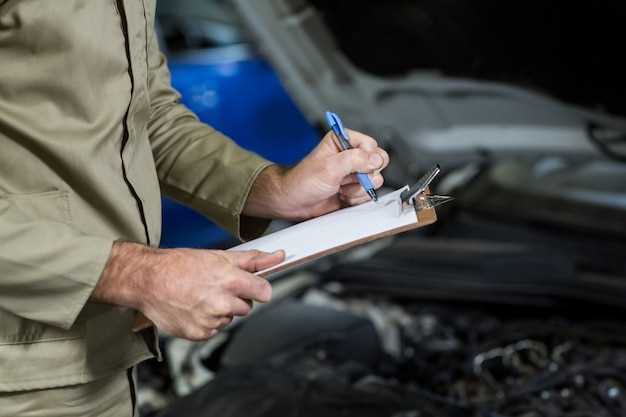
In the high-stakes world of racing, the condition of the track can significantly influence a racer’s performance and safety. Proper track inspection is not just a formality; it’s a crucial component that ensures both the integrity of the race and the well-being of all participants. Every racer, whether novice or seasoned, should familiarize themselves with the essential rules governing track inspections.
The process of track inspection involves a thorough assessment of the racing surface, including checking for surface irregularities, debris, and weather conditions that may impact the race. Inspecting the track allows racers to identify potential hazards and adjust their strategies accordingly, making it imperative for every competitor to understand the protocols involved.
Adhering to track inspection rules not only enhances individual performance but also contributes to the overall safety of the racing event. In this article, we will explore key guidelines that every racer should follow to navigate track inspections effectively, ensuring both a competitive edge and a secure racing environment.
Understanding Pre-Race Inspection Procedures

Pre-race inspection procedures are crucial for ensuring a fair and safe racing environment. Each track has its own set of rules that govern the inspection process, and it is essential for racers to familiarize themselves with these guidelines. Typically, inspections are conducted to verify that all vehicles meet the specified safety and technical requirements mandated by the governing body of the sport.
During the pre-race inspection, officials will check various aspects of the vehicle, including safety gear, weight restrictions, tire specifications, and engine modifications. Compliance with these rules is non-negotiable; any vehicle that fails to pass inspection risks disqualification from the race. Racers should prepare their cars well in advance, ensuring they adhere to all technical standards related to the track’s specifications.
Additionally, teams should be aware that pre-race inspections can occur at multiple points, including during practice sessions. Being proactive in addressing any potential issues can save time and prevent last-minute complications. Understanding the inspection process not only helps in ensuring compliance but also enhances the overall performance of the vehicle during the race.
Finally, clear communication with race officials during this process is vital. Questions regarding the rules or specific items being inspected should be directed to officials to avoid misunderstandings. By acknowledging the importance of pre-race inspections, racers can focus on their performance, knowing they have met the necessary track regulations.
Common Track Regulations for Safety Compliance
Safety is paramount in any racing environment, and understanding common track regulations is essential for compliance during inspections. These regulations are designed to protect both drivers and spectators while ensuring fair competition.
Track Surface Maintenance: Regular inspections of the track surface are critical. This includes checking for cracks, debris, or any irregularities that could pose hazards. Tracks should be kept clean and well-groomed to provide optimal racing conditions and reduce the risk of accidents.
Barriers and Safety Fencing: Proper installation and maintenance of safety barriers are vital. Inspections should verify that barriers meet industry standards and are free of damage. Safety fencing must be securely erected to protect spectators from potential crashes and should be inspected for stability.
Emergency Access: Tracks must maintain clear access routes for emergency vehicles at all times. Regulations typically require designated paths to be free of obstacles and easily accessible in case of an incident. Regular inspections should ensure that these routes are marked and unblocked.
Signage and Markings: Adequate signage is essential for guiding drivers and informing spectators. Track regulations often specify the types of signs required, including warning signs, directional arrows, and information about speed limits. These should be regularly inspected for visibility and clarity.
Equipment Compliance: All equipment used during racing events, including timing and scoring systems, must comply with established safety standards. Routine inspections should ensure that all equipment is functioning properly and meets the necessary regulations.
Driver Safety Gear: While not directly related to track conditions, regulations often mandate inspections of drivers’ safety gear. This includes helmets, suits, and harnesses, which must meet specific safety certifications to ensure the protection of drivers during events.
In conclusion, adherence to these common track regulations significantly enhances safety compliance and minimizes risks during racing events. Regular inspections play a crucial role in maintaining these standards and fostering a secure environment for all involved.
Post-Race Inspection Requirements and Best Practices

After each race, teams must adhere to strict post-race inspection rules set by the governing bodies. These rules are crucial for ensuring fair competition and maintaining the integrity of the sport. Understanding these requirements will help racers prepare their vehicles effectively and avoid penalties.
One of the primary requirements is the documentation of vehicle specifications before and after the race. Teams should maintain a detailed record of all modifications and repairs. This documentation should include changes to weight, tire specifications, and any alterations made to the engine or suspension systems. This information is vital for inspectors to verify compliance with the established track rules.
Additionally, teams should ensure that all safety equipment is functioning correctly. Inspectors will examine seatbelts, fire suppression systems, and helmets for compliance with safety standards. A failure to meet these safety requirements can lead to disqualification or significant fines.
Another best practice involves the cooperation between team members and inspection officials. Teams should be ready to provide immediate access to their vehicles and be transparent about any modifications. This openness fosters a positive relationship and can lead to smoother inspections, minimizing the risk of misunderstandings.
It is also essential for racers to be aware of the specific rules for their respective series or tracks. Different organizations may have varying guidelines concerning post-race inspections. Familiarizing oneself with these unique requirements can prevent costly mistakes that could affect a team’s standings or future participation in events.
Finally, teams should develop a checklist to streamline their post-race inspections. This list should include all the critical areas that need to be verified, such as weight compliance, tire tread depth, and a thorough inspection of the suspension and drivetrain components. Having a systematic approach not only saves time but also enhances the likelihood of meeting all track rules effectively.
